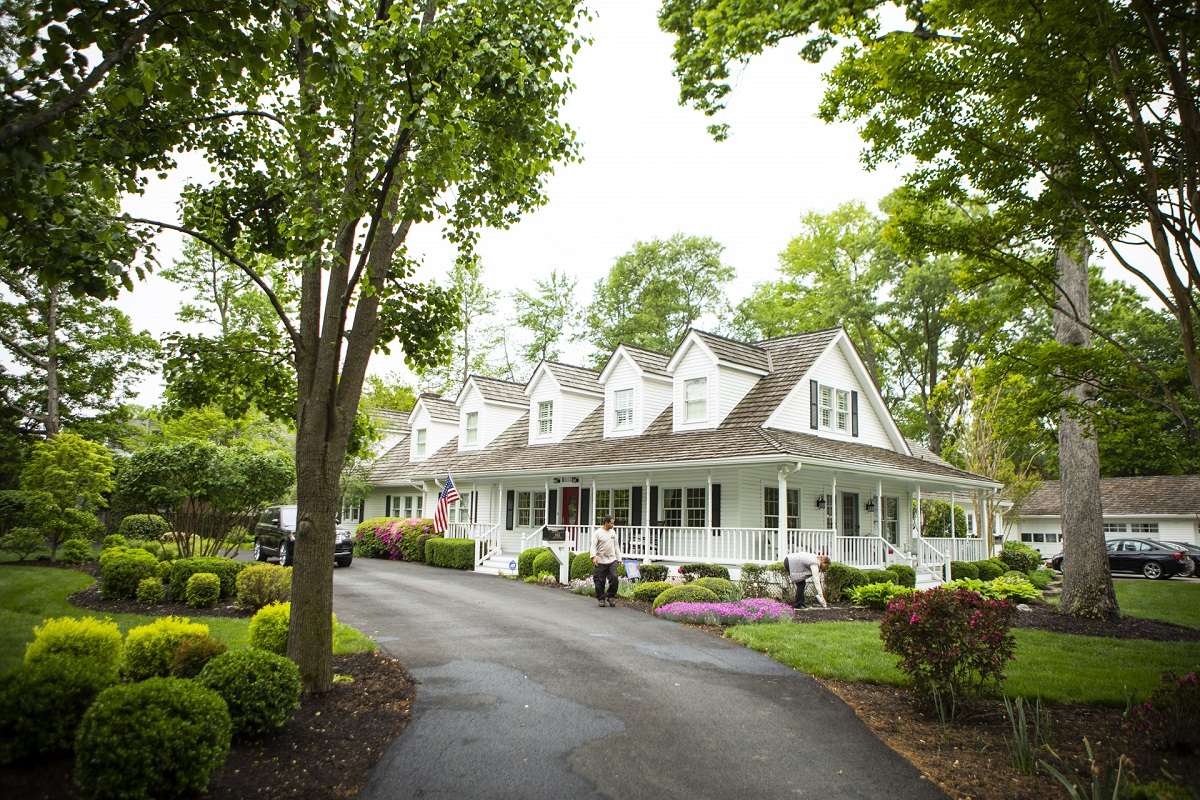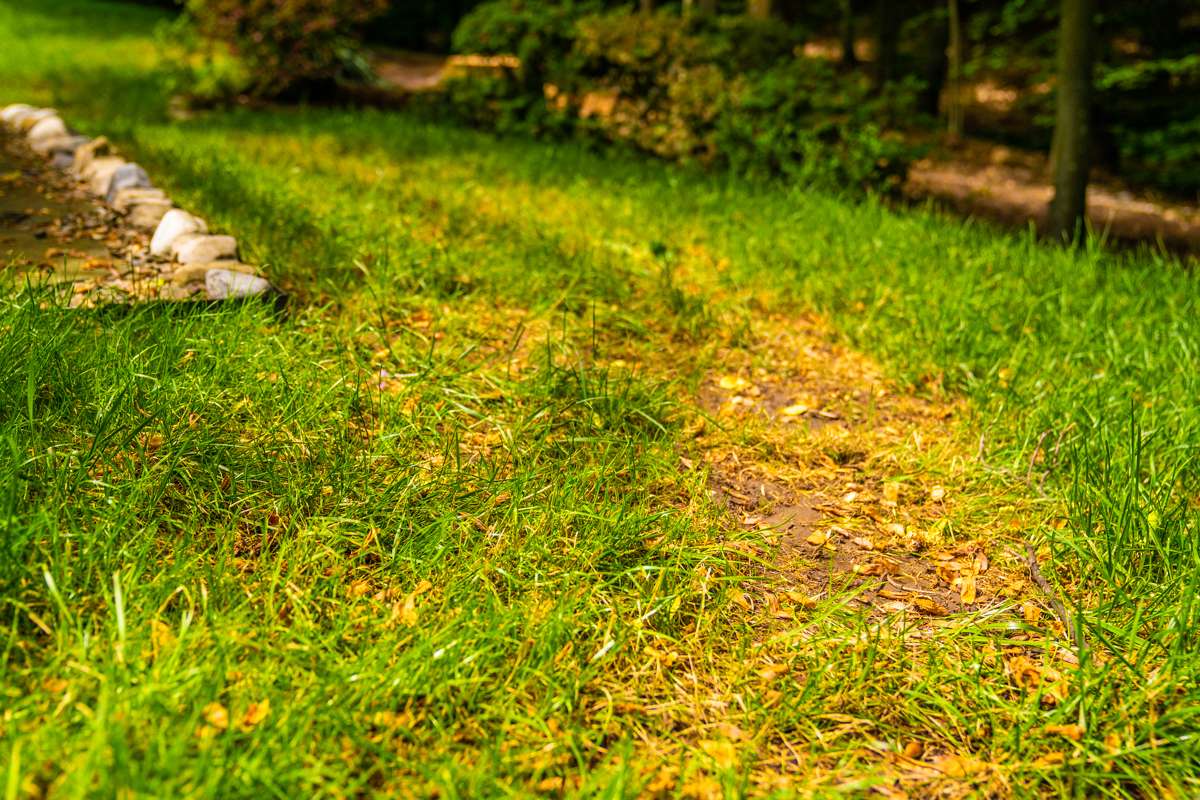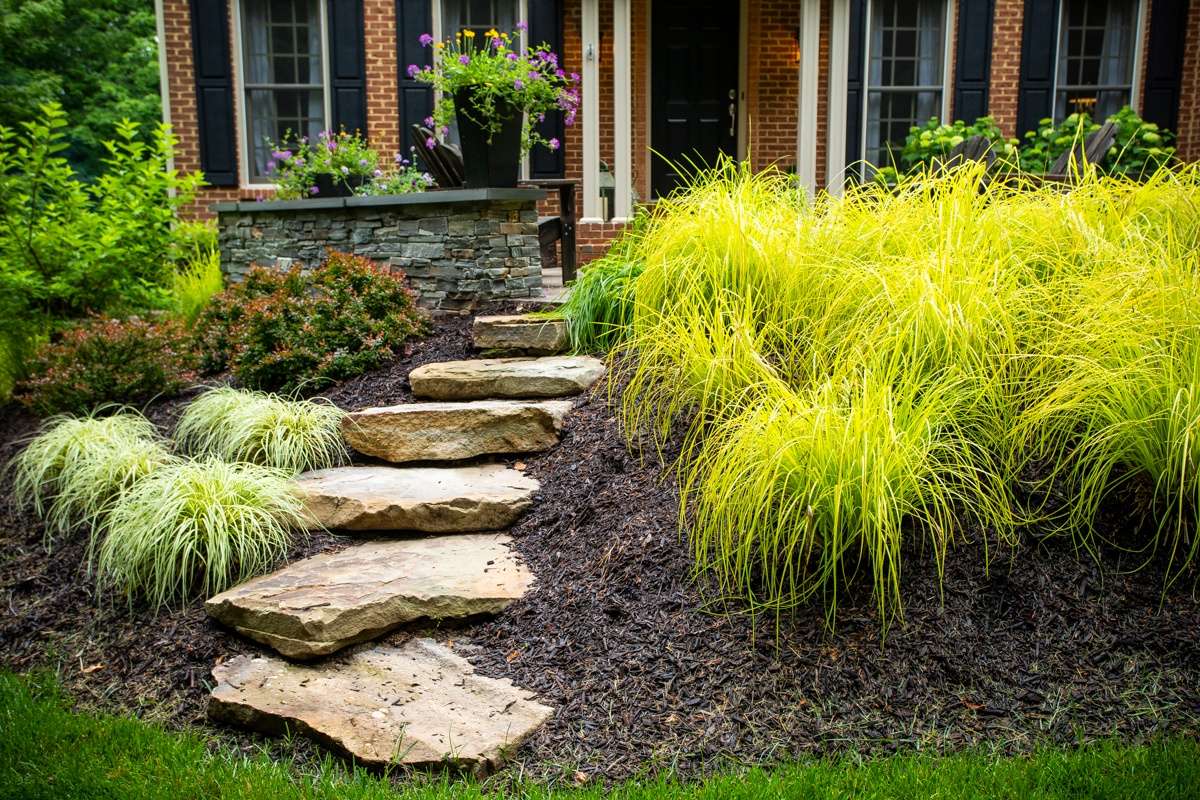


Lawns are susceptible to various problems, including harsh weather conditions, invasive weeds, and even lawn-eating pests.
What’s so frustrating about insects that damage lawns is that they might be feeding right beneath your nose. You might be outside enjoying the outdoors and have no idea that they’re lurking.
Often, damage isn’t noticeable until it’s severe. The good news is that there are solutions.
In this article, we’ll talk about some of the common lawn pests in Northern Virginia and how we deal with them.

Talking specifically about the lawn-eating pests, there are three pests that we deal with most often:
Let’s talk about each of these.
Grubs, which is the collective name for several species of beetles in their larval stage, are tiny creatures that have the power to do a lot of damage to your lawn. These are bugs that eat grass roots.
Beetles lay their eggs in the summer, so the grubs are born in the soil and typically start feeding on the roots of your lawn around mid-August.
You might spot grub damage in a few ways - brown spots, poorly-rooted turf or even birds tearing up your lawn as they look to feed on these grubs.
.jpg?width=4000&height=2667&name=crow%20tearing%20up%20a%20lawn%20to%20feed%20on%20grubs%20(CC).jpg)
Damage from these grubs can occur rapidly. As the grubs feed on your roots, it will ultimately kill your lawn. This may start with some brown patches. However, at the point where grubs have fully consumed your lawn roots, you may discover to your dismay that you can roll up the dead turf like a carpet.
The best option for grub control is preventative maintenance. A lawn care program that includes pollinator-safe grub control will address your grub problem before it can cause any damage.
A preventative program addresses young grubs as they hatch, not allowing them any opportunity to feed on your lawn.
Unlike grubs, which feed beneath the surface, chinch bugs eat grass at the surface of your lawn. These lawn-destroying insects are tiny—an adult is only about ⅙-inch long, and you may never notice them in your grass.
What you will notice is the damage that these surface-feeding insects can do to your lawn. An infestation may bring as many as 200 insects per square foot of turfgrass.
Chinch Bugs cause damage by sucking out the plant fluids and injecting a toxin that can cause the grass to yellow, turn brown, and ultimately die. Oftentimes, the first sign of a Chinch Bug problem is the grass changing color.

If you suspect that you have an issue, you can perform a simple visual inspection on the lawn’s fringe, where the grass is still green. This is where chinch bugs will be moving after they’ve fully consumed the adjacent area. Get on your hands and knees, pull the thatch apart at multiple spots, and watch closely for pest movement.
The best way to address chinch bugs is to apply insect control materials and manage excess thatch by having a lawn aeration performed annually. This will break up compacted soil and improve microbial activity, which will help naturally break down excessive thatch layers where chinch bugs thrive.
Sod Webworms are a second type of surface-feeding lawn pest that we deal with here in Northern Virginia. These lawn insects are also sometimes called “lawn moths.” That’s because Sod Webworms are actually the caterpillar stage of what will turn into a moth.
In the caterpillar stage, Sod Webworms damage grass by feeding directly on it. These pests tend to hide during the day and then feed at night.
There are curative products that can address Sod Webworms in the larval stage. As with any pest, it’s important to find Sod Webworms early on, before they can do significant lawn damage.
All 3 of these lawn pests eat grass, but the difference is that while grubs are sub-surface pests (and feed on lawn roots), Chinch Bugs and Sod Webworms are surface-feeding insects that feed on the grass blades themselves.
Of course, there are plenty of pests in Northern Virginia that cause problems (but don’t eat your lawn).
Creepy crawlies like spiders and ants are a nuisance, while pests like mosquitoes, fleas, and ticks can cause real problems. We also offer solutions for these pests.
Our Perimeter Pest Control Plan will take care of outdoor pests that commonly become indoor problems (like spiders, ants, and centipedes). And our Mosquito, Flea, and Tick Plan will take care of those potentially dangerous yard pests.
It can be challenging to identify exactly what’s wrong with your lawn, as many problems can mimic one another.
Surface-feeding insect damage typically appears first as brown spots on the surface. The lawn may begin to wilt, turn brown, and ultimately die. That’s why it’s important to find these pests as early as possible.
When you’re regularly receiving professional lawn care, you can rest assured that these pests will be spotted early on, and lawn insect control measures will be taken to prevent them from wreaking havoc.

Lawn grub damage will also show up as brown spots, but it’s because the roots have been detached from the grass itself. As we mentioned, this may mean that your dead turf will roll up like a carpet.
But aside from lawn pests, other problems can cause a lawn to turn brown and die. Drought and disease are two other common culprits. Often, it does take a professional diagnosis to figure out what’s going on.
Unfortunately, it’s not uncommon for lawns to be struggling with more than one problem at once. But a lawn care professional can help you figure out what’s going on and implement the proper solutions.
If you care about a healthy lawn, then lawn-eating pests can be a major source of frustration. They can take away from your thick, green, and thriving lawn by leaving unsightly damage.
Of course, lawn pests are just one of many potential problems that can plague the lawn. That’s why it’s essential to choose a lawn care company in Alexandria or Arlington, VA that will go out of its way to diagnose your problem properly. You need a customized solution to address your specific issue in order for it to be successful.
It’s important to know that not all lawn care companies are created equal and some will not put in the time or effort to create customized solutions but will instead treat every lawn the same. This simply won’t work as different problems require different approaches.
By choosing wisely, you can feel confident that you’re taking the right steps to get your lawn problems under control and your lawn on the path to optimum health.
If you’d like to stop worrying about lawn problems like lawn pests and are ready to hand your services over to a company you can count on, request your quote, and relax as you get the royal treatment.
Image Source | Crow Eating Grubs,

Since its founding, Krisjan has led Kingstowne Lawn & Landscape with a straightforward philosophy: treat every customer like the “only” customer. His passionate pursuit of excellent customer service has led to 28 successful years and a thriving company with over 85 employees. Since 1997, Kingstowne has helped thousands of homeowners in the Alexandria, Arlington, and Springfield, VA area get what they want - a worry-free property they can be proud of.



